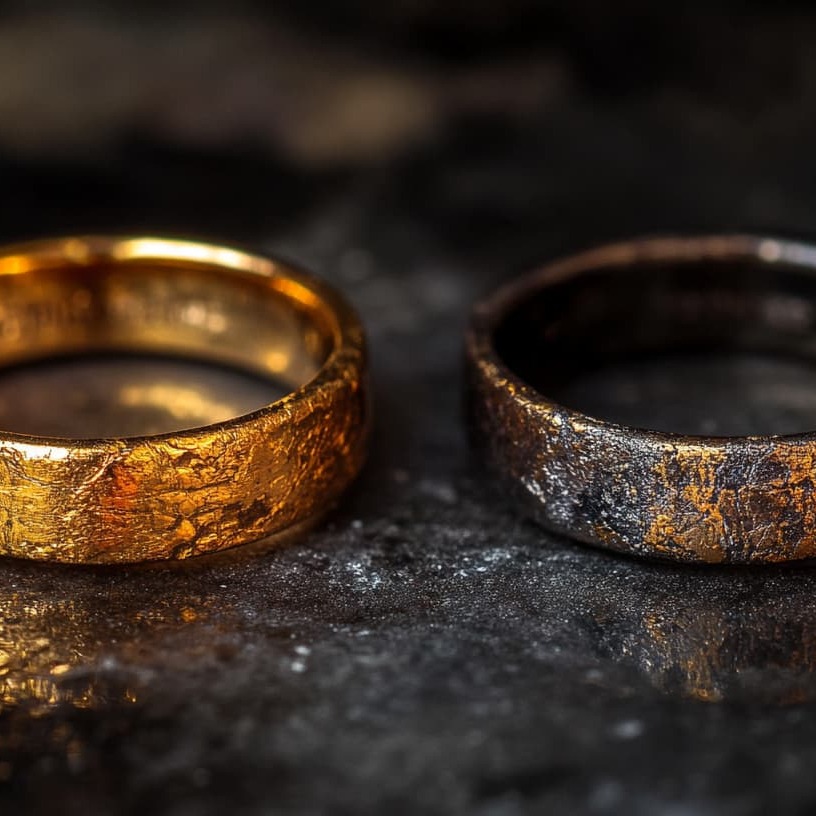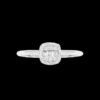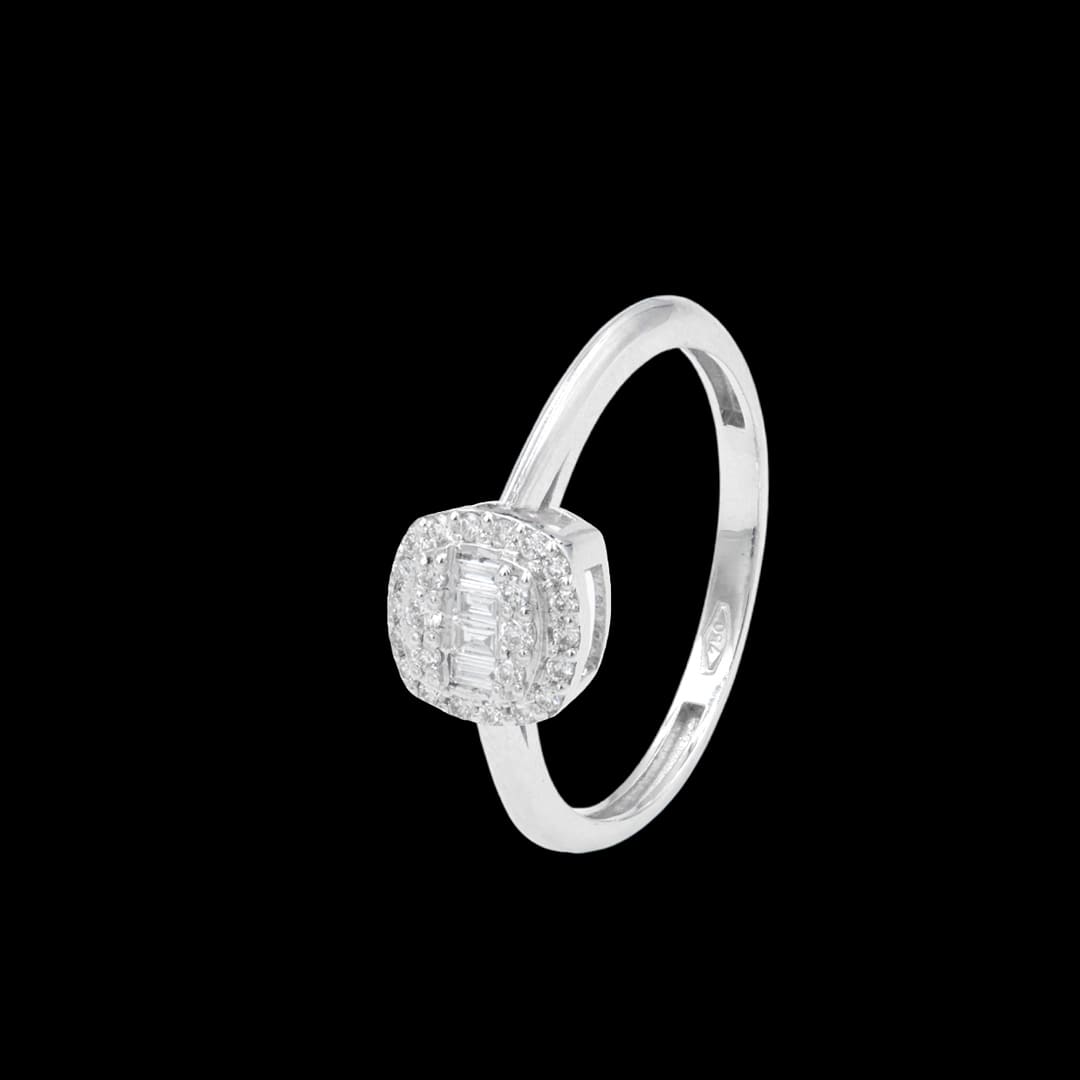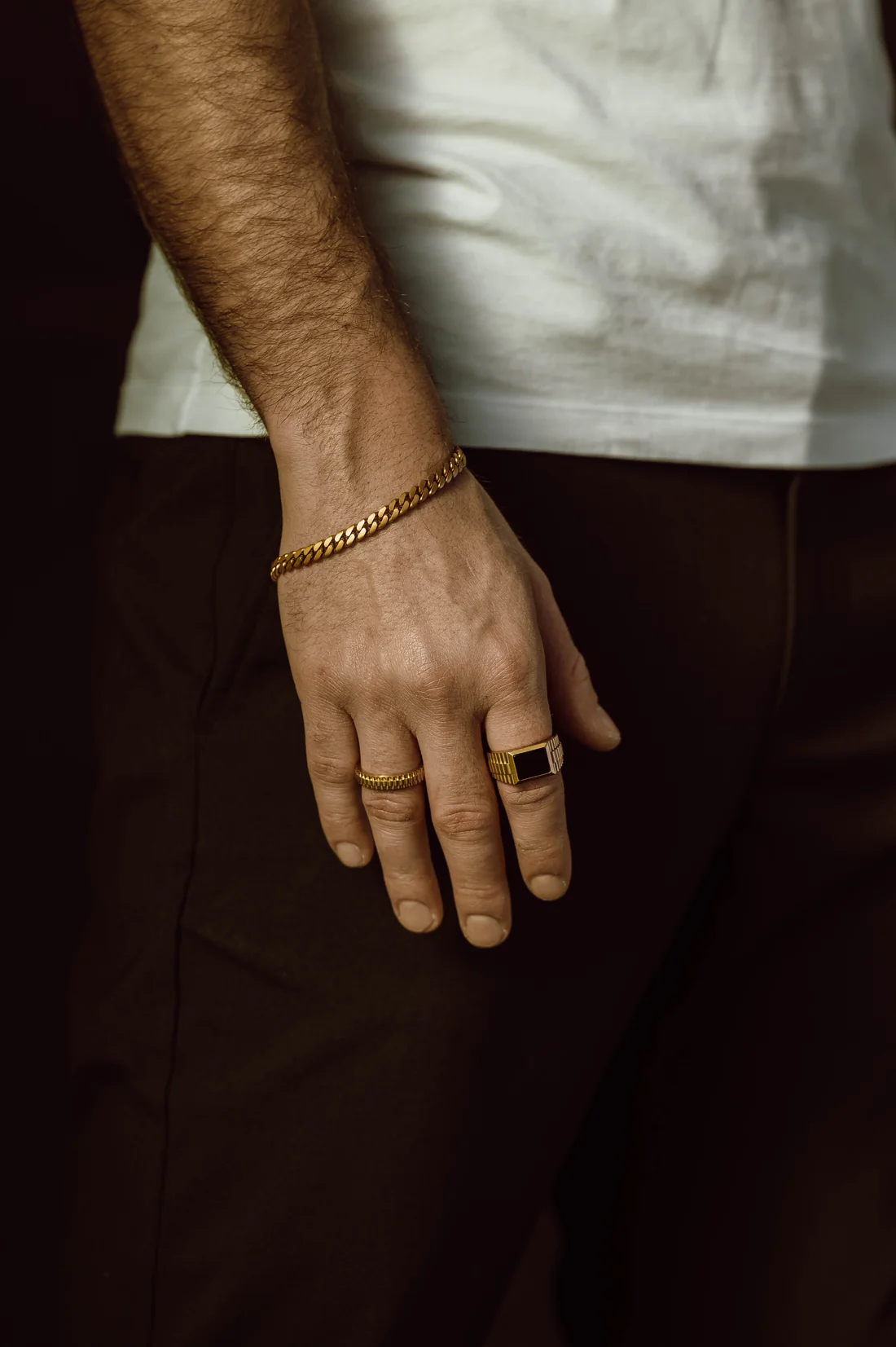
What Causes Gold Jewelry to Turn Black?
Gold is known for its timeless beauty, resistance to tarnish, and enduring shine. Yet, many people are surprised—and even alarmed—when their gold jewelry starts turning black. If you’ve noticed dark patches or a dull discoloration on your gold pieces, you’re not alone. While gold itself doesn’t tarnish easily, several factors can cause it to darken over time.
Let’s explore the common reasons behind this surprising transformation and how to prevent it.
1. Low Gold Purity (Alloy Content)
Pure gold (24 karat) is too soft for everyday wear, so it’s often mixed with other metals like silver, copper, nickel, or zinc to make it more durable. These metals, known as alloys, are more reactive and prone to tarnishing.
When exposed to air, moisture, or chemicals, the alloy metals may oxidize, causing the surface of your jewelry to appear black or discolored—even if the piece is mostly gold.
Tip: If you want long-lasting shine, choose higher-karat gold like 18K or 22K, which contains more gold and fewer reactive metals.
2. Sweat and Body Oils
Your skin naturally releases oils, and sweating is unavoidable—especially in warm climates or during workouts. When sweat and body oils interact with the metal alloys in your jewelry, they can speed up tarnishing and result in a blackened appearance over time.
Tip: Remove your gold jewelry before exercising or in hot, humid environments.
3. Exposure to Harsh Chemicals
Household cleaners, perfumes, lotions, chlorine (like in pools), and even makeup can all interact with the metals in gold jewelry. These chemicals may cause the metal alloys to break down or react, leaving behind dark residues or stains.
Tip: Always put on your jewelry after applying lotions or sprays—and take it off before using cleaning products or swimming.
4. Air Pollution and Sulfur Compounds
Certain environments—especially urban areas with higher air pollution—can expose your jewelry to sulfur or other airborne compounds. These can react with the alloy metals, especially silver and copper, leading to black tarnish.
Tip: Store your jewelry in an airtight pouch or box when not in use to reduce exposure to pollutants.
5. Improper Storage
Storing gold jewelry in damp or poorly ventilated areas can increase the chances of it turning black, especially if pieces are stored together and rub against each other. This can cause friction damage and accelerated tarnishing.
Tip: Use a soft, dry cloth to clean your jewelry before storage, and keep it in individual pouches to avoid scratching or chemical reactions.
6. Skin pH Levels
Everyone’s skin has a slightly different pH level. People with more acidic skin (lower pH) may notice their jewelry turning dark more quickly. This isn’t harmful, but it’s a personal factor that can affect how your gold reacts over time.
Tip: If this is a recurring issue for you, consider switching to higher-karat gold or getting your jewelry coated with rhodium for extra protection.
How to Restore and Prevent Tarnish
If your gold jewelry has turned black, don’t worry—it can often be restored with a gentle cleaning. Use a soft toothbrush and a mixture of mild soap and warm water to clean the piece, then dry it thoroughly. For deeper tarnish or valuable pieces, consider having them professionally cleaned.
To prevent future discoloration:
-
Remove jewelry before showering or swimming
-
Store pieces in dry, soft-lined boxes or pouches
-
Clean regularly with a soft cloth
-
Avoid contact with perfumes, lotions, and cleaning agents
Understanding The Cause
Gold jewelry turning black is usually a result of reactions with alloy metals, environmental exposure, or personal habits. Understanding the causes can help you take simple steps to protect your favorite pieces and keep them shining for years to come.
By choosing high-quality gold and giving your jewelry a little care and attention, you’ll preserve its beauty and avoid the dreaded dark tarnish.
View Abdullah Sakkijha Jewelry’s latest collections and pieces: https://abdullahsakkijha.com/
Visit us: Swefieh, Al-Hamra Street – Amman, Jordan
Follow us on our socials:
Instagram | Facebook |Snapchat | TikTok | YouTube







Add comment